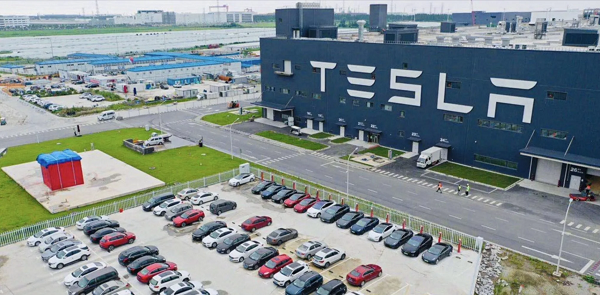Inflation is the rate at which prices rise over a specific period. Inflation is often defined as a broad metric, such as the total increase in prices or the cost of living in a country. However, it may also be computed more precisely—for specific items such as food or services like a haircut, for example. In any context, inflation reflects how much more costly a specific set of products and/or services has grown over a specific period, most typically a year.
Do customers notice when their ordinary items become smaller? Often, they don’t, and businesses take advantage by lowering the amount of stuff they offer while maintaining the same prices. Shrinkage of product sizes to increase profits is not a new practice, but it is becoming more prevalent during times of scarcity and inflation. On the shrinkflationsubreddit, some shoppers are noticing and documenting their shrinking groceries.
Even though the Bureau of Labor Statistics released US inflation numbers today indicating that prices grew 7.9 percent in the previous year, people may not know they’re paying more for some of their usual purchases since firms are cutting sizes while keeping prices the same.
What does shrinkflation mean?
Downsizing a product while maintaining its price is frequently referred to as “shrinkflation,” a mix of the phrases shrink and inflation. Companies are facing increasing supply costs, which they may attempt to pass on to the customer. Manufacturers save money by downsizing their products.
Shoppers are price-sensitive, yet they may not notice small changes in packaging or read the fine print on a product’s size or weight. As a result, if the price is the same, buyers are less likely to notice getting less. “Downsizing happens in waves, and it tends to happen at periods of higher inflation,” said Edgar Dworsky, a consumer rights lawyer who maintains a database of shrunk items at consumerworld.org. “Bottom lines are being squeezed, and there are three fundamental options: either raise the price, take a little bit out of the product, or reformulate the product with cheaper materials.”
Companies typically try to keep their customers satisfied without directly increasing the price of a product. They also seek to compete on pricing with firms supplying similar items. Not all size modifications are motivated by a desire for profit. New restrictions that limit the number of calories or the quantity of sugar in a portion of food might cause the size of the product to alter. A PPP model, or Price Pack Purchase model, is used by businesses to identify how to market items in various channels at the proper cost.
Jamie stated that customers are becoming more conscious of the dangers of discarded packaging. “Either remove the oxygen or rethink the container.” However, manufacturing new packaging necessitates the purchase of the necessary machinery. “How many millions do you need to spend on capital, design, and supply chain to manufacture a somewhat smaller package?” If the commodity price reverses and everything returns to normal, you may have squandered your investment.”
Doritos packages have shrunk owing to pandemic demands, according to Frito-Lay. “Inflation is affecting everyone… “We removed just a tiny bit out of the bag so we could offer you the same pricing and you could continue to enjoy your chips,” a spokesperson explained. Representatives from Procter & Gamble, which manufactures Crest toothpaste, and Mondelez, which makes Nabisco Wheat Thins, acknowledged volume decreases in their products but did not explain why. While Crest 3D White is now available in a 5 oz tube, the 4.1 oz tube has decreased to 3.8 oz. According to a Proctor & Gamble spokesman, Bounty became better as it got smaller because paper towels are more absorbent than they used to be.
“Family Size” goods boxes are one of the most perplexing price cuts. According to US Census Bureau data, the average size of a US family has been growing (pdf). However, a box of original Wheat Thins used to be offered in Family Size 16 oz boxes but is currently packed as 14 oz for the same price. That’s a 14% rise in price. The reduced-fat version of Family Size was released next, with a price rise of 16% from 14.5 oz to 12.5 oz.
When shrinking passes the threshold towards slack-fill
In the United States, quietly reducing items is lawful until the vacant space in a company’s package no longer serves a function. The air in a bag of chips serves to keep the chips from breaking during transportation and handling. A gap is required for machines to insert and fill an aspirin bottle. Downsizing isn’t always simple, but it has to be worthwhile. According to Jamie Stone, a package design specialist at PA Consulting, buyers are becoming increasingly conscious of the harm caused by discarded packaging.
“You must eliminate the oxygen or change the container.” However, manufacturing new packaging necessitates the purchase of the necessary machinery. “How many millions do you need to spend on capital, design, and supply chain to manufacture a somewhat smaller package?” If the commodity price reverses and everything returns to normal, you may have squandered your investment.”
Communication with customers is essential. “The most essential thing is that if you make a change in your product, you need to notify people about it,” Chiagouris added. “It depends on how they characterize the product, and if they’re not portraying it honestly and properly for what it is now, that’s misleading.”
Selling fewer units of a product in the same packaging or failing to communicate changes might result in business disasters. In 2021, McCormick paid $2.5 million to settle consumer accusations that they sold less black pepper in the same-sized tin cans. Mondelez notably faced legal action in 2017 for increasing the gap between the peaks of Toblerone candy bars and ultimately reverted to their original design.
Considering more than just the price
Is it ethical to downsize a product if a firm is an upfront about marketing a new, smaller product? “They are not compelled to do so. “It’s still picking an alternative that will be less evident to the public,” Dworsky explained. “With customers so sensitive to price rises, there’s even more motivation now.”



